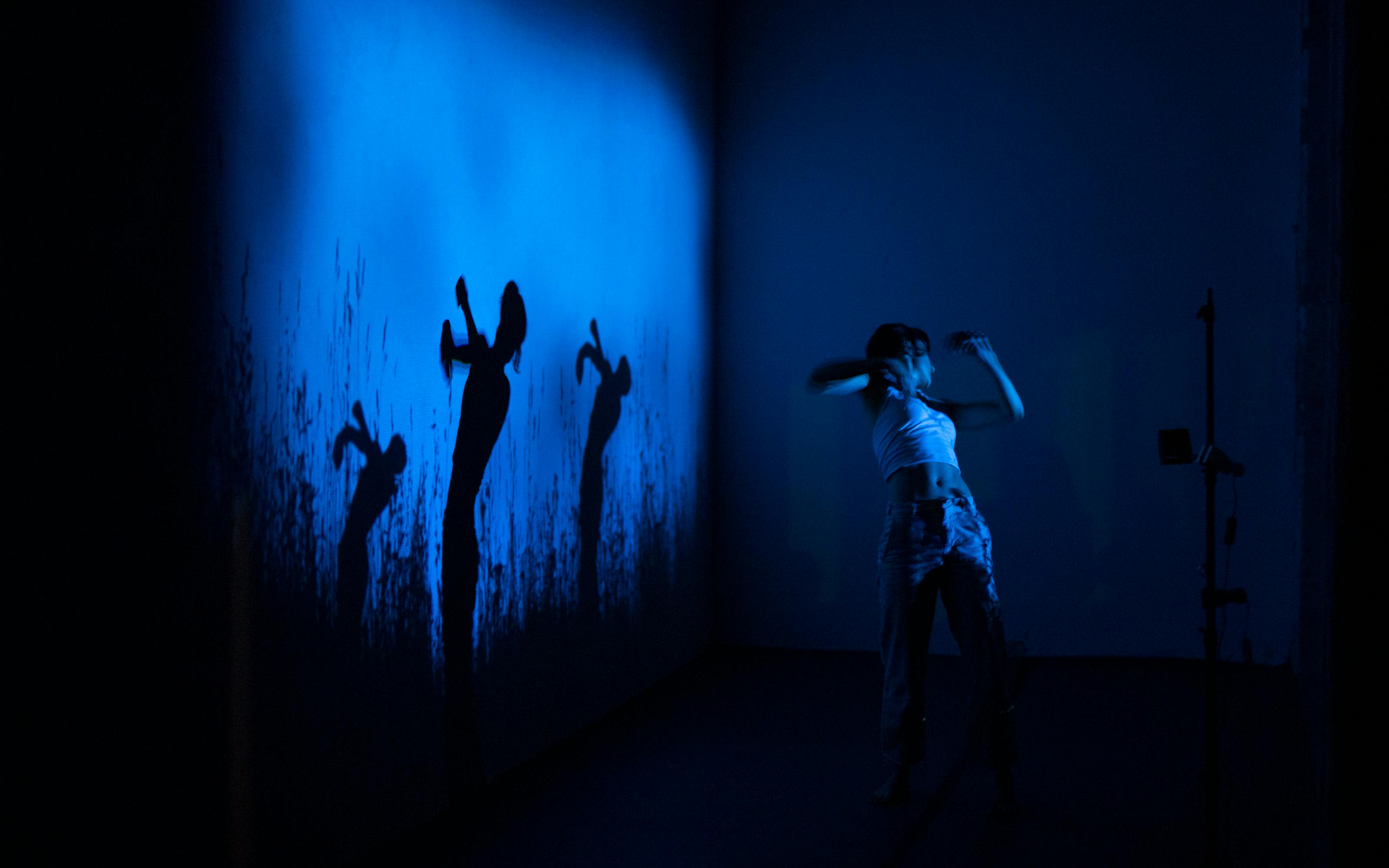
Visual Effects and the Future of Performing Arts
Posted on 2022-03-23T23:00:00+0000 in Catalyst
Dive deeper into the immersive emerging art movement that fuses visual effects and performing arts, with two exceptional art pieces exhibited at our latest Signals Festival.
What’s the formula for an artistic movement? New technology multiplied by accessibility to the masses. From screen-printing technology came pop art, and from digital tools comes our current obsession with VFX-fuelled immersive experiences. With the power to elevate any art form, visual effects are providing a new dimension of creative expression. In fact, as the boundaries between the physical and virtual worlds become less and less distinct, so too do the lines between art forms. In an immersive space – or installation – audio, visuals and motion are not to be examined separately, but as a combined experience that influences our perception.
Catalyst’s Visual Effects, Digital Arts & Animation programme is built for this movement, encouraging creators to forge their own future with such diverse skills as filmmaking, post-production, motion design, matte painting, 3D animation, digital compositing, visual effects supervising, creative coding, installation and interactive art. With VFX artists, filmmakers, screen actors, electronic musicians and sound engineers all under one roof, our international community is also the perfect melting pot for interdisciplinary collaboration.
Our annual community showcase, Signals Festival 2021, placed our resident artists on Berlin’s new frontier of immersive art, otherwise occupied by such pioneering events as our recent partner, CTM Festival. Among the vibrant programme of performances, installations, screenings and dialogues, were two VFX-driven works: Marlee Weinberg and Matthieu Schmit of GhostRaum’s performative dance installation, Embodied, and Paulina Greta, aka Imaginaria, and Alessandro Adriani’s audiovisual performance Ignes Fatui. Scroll down to learn more about these exceptional art pieces.
Header image: Embodied, performative installation by Matthieu Schmit and Marlee Weinberg at Signals Festival 2021. Photo by Rita Couto.
Embodied
Marlee Weinberg and Matthieu Schmit of GhostRaum
It was only a matter of time until Visual Effects, Digital Arts & Animation Certificate alumna Marlee Weinberg would combine her dance and VFX talents in a performance at Catalyst. In fact, when we interviewed her in early 2020, she cited the dance piece, GLOW, as the mind-blowing synthesis of technology and contemporary dance that inspired her to pursue VFX. Our multidimensional course became the perfect playground for her ambitions.
At Signals Festival, she collaborated with programme lead Matthieu Schmit, founder of the GhostRaum production studio, to create their stunning performative installation, Embodied, which revolved around a narrative of incarnation. Matthieu used TouchDesigner to create the organic visuals, and interestingly, though he was creating an artificial realm, the creative process didn’t feel as artificial as you might think. “The language of nature is mathematics and code is also mathematics,” he tells us. “So it’s very interesting to recreate nature elements for code, because there’s a direct fit and it’s really organic.”
Ignes Fatui
Paulina Greta, aka Imaginaria, and Alessandro Adriani
Club closures over the past couple of years have made room for more conceptual and immersive takes on electronic music. At the forefront of the movement in Berlin are events such as CTM Festival 2022, where audiovisual installations further cultivated our desire for multisensory electronic music experiences. A couple of months earlier, at Signals Festival, Visual Effects, Digital Arts & Animation tutor Paulina Greta, aka Imaginaria, and music producer, DJ and Mannequin Records director Alessandro Adriani showcased the potential of audiovisual art for emergent interactive storytelling.
Their project, Ignes Fatui, (Latin for ‘will-o’-the-wisp) interprets folklore tales about the light phenomenon caused by organic decay. “The concept is to create these audiovisual illusions that are uncatchable and constantly changing,” Paulina explains. “Our performances are never the same. We usually perform live and every time it’s a different one. So it’s an interesting challenge to design a new performance; to coordinate music, narrative, soundscapes and visuals.”
As we saw in her collaboration last year with IDM duo Soft Crash, Paulina crafts her visuals with VR sculptors, whereas Alessandro works with analog synthesisers and samplers.
More on VFX installations
Want to find out more about the potential of VFX technology for interactive installations? Revisit last year’s second-year student exhibition at Catalyst.


